It was just a matter of time, dear readers. There are only so many movie and book series to explain to newborn nerds before I eventually return to the saga that (arguably) ultimately started it all. And by “it all,” I mean more or less everything that could possibly turn up when you google the word “Geek.”
For those of you who have managed to avoid The Lord of the Rings and The Hobbit even after their modern cinematic recreations, I tip my hat to you. And I also want you to know that you have my pity. J.R.R. Tolkien’s extensive work of fiction is worth trying for a lot of reasons, and I want to explain those reasons in a spoiler-free manner before you continue to shun one of the past century’s greatest literary achievements (and this century’s cinematic ones).
Brace yourself.
Hogwarts Middle-earth, A History
The series was written by Professor John Tolkien of Oxford, but not until he was well into his forties. Much of his early life ended up influencing, even inspiring his later writings. For example, he was born in South Africa and was bitten by a baboon spider at a young age, but was saved by his nurse who sucked the poison out (hence his common usage of giant spiders).
As a teenager, he met a young lady named Edith Bratt at a boarding house and started courting her ardently, but was soon forbidden by his guardian from meeting with her until he was twenty-one. He obeyed, and as soon as he was of age he wrote her a letter proposing marriage (hence the repeated themes of forbidden love in his works).
He volunteered for the army as soon as WWI broke out in 1914 and fought in the infamous trenches of Germany, where the scorched barren landscape of industrialization and war would later inspire the city of Isengard and the land of Mordor.
Years later, he and his wife were walking through a set of woodlands when she began to dance: a scene that would directly inspire his tale of the star-crossed lovers Beren and Luthien who meet when Luthien is dancing in a forest glade. Tolkien actually had the name “Luthien” carved on Edith’s gravestone when she passed, and the name “Beren” adorns his own.
The point is, Tolkien led an impressive life that inspired his impressive tales. His greatest passion was the study and creation of languages, so his fantasy books were actually in the minority of his published writings (and he didn’t even consider them to be his best works). He preferred the study of myths and legends, like those of King Arthur or Beowulf. However, he lamented Britain's lack of culture from its ancient heritage, as most was wiped out and replaced by the Anglo-Saxons that invaded Britain in the Middle Ages. That was part of the reason why he took up his pen and created Middle Earth. He wanted to create a myth that was inherent to the British Isles, and to do so he even created entire dictionaries and syntax for his own fictional language[s] of Elvish, Dwarvish, and more.
But how did the tales really get started, you ask?
The story goes that one day, Tolkien was trudging through a lengthy pile of college essays that he had to grade (remember, he was a Professor at Pembroke College, Oxford during his later years). However, one of the students hadn’t used all of the papers allotted to him. So to keep himself sane in the midst of all the paperwork, on one of the blank slips, Tolkien merely scribbled, “In a hole in the ground, there lived a hobbit.”
He had no idea what a hobbit was, but after a while decided that perhaps he ought to find out. Thus came his first book to take place in Middle-earth. It was called The Hobbit, and it was published almost more by accident than by intent. The book became surprisingly popular with both children and adults, and they demanded a sequel.
Eventually Tolkien acquiesced and began on The Lord of the Rings, which took over a decade to make. The trio of volumes were meant to be published as one book, but were split into three parts for the sake of readers (though he wasn’t fond of the idea). Through the years Tolkien painstakingly constructed manuscripts with the help of a writing group that called themselves “The Inklings,” of which C.S. Lewis (author to The Chronicles of Narnia) was a member.
Years later came The Silmarillion, The History of Middle-earth, Unfinished Tales of Númenor and Middle-earth, and The Children of Hurin (many of which were published posthumously, with Children of Hurin releasing as late as 2007). These books were generally enjoyed by readers, but not as beloved over-all by some because they focused in large part on the more general history of Tolkien’s fantasy world. The Children of Hurin was also received with mixed results because of its macabre themes as an Oedipal tragedy.
However, Tolkien’s deep-rooted mythology was the first “adult fairy-tale” of its kind. It actually took knights in shining armor and evil monsters seriously, and many people agree that it inspired the entire genre of “High Fantasy” as a result (more on that in the “Appeal” section).
A few attempts at adapting the books for the silver screen were attempted over the years. The Hobbit was created in animation multiple times, with the 1977 cartoon television-movie by Rankin/Bass being the foremost that modern viewers tend to remember (including myself… though that version of Gollum admittedly haunted most of my childhood). Ralph Bakshi also attempted to release The Lord of the Rings as a pair of animated films, with the first coming out in 1978, but the second was never made. His style contained a very strange mix of live action silhouettes with the animated characters, which is admittedly fun to watch… but it’s better as a nostalgic giggle-fest than as a serious adventure. (You're probably looking it up right now, aren't you?)
And then, of course, came Peter Jackson. The noted director was working on an entirely separate project just before 2000, and as he was admiring the computer-effects, he realized that movies could now tell any story, of any scope, in a way that had previously been impossible. He and his friends wondered what story was “the impossible story…” and then thought of Tolkien’s masterpiece.
The rest is history. Jackson performed a virtually impossible feat, deciding to film all three movies at once during a two-year shoot. The crews and actors more or less moved to New Zealand for the duration of the project, where scripts were written and rewritten on a daily basis, from the first day of preproduction to the last day of editing. Fans received the plot alterations with mixed feelings, but nobody could deny that the heart of the saga was present. The films had concentrated on creating intricate cultures for the different countries in the story, which was obvious in their detailed hand-maid costumes, sets, and props.
The music held no trace of modern instruments, and many lines of dialogue were learned painstakingly in Tolkien’s fantasy languages.
The music held no trace of modern instruments, and many lines of dialogue were learned painstakingly in Tolkien’s fantasy languages.
The resulting movies that formed The Lord of the Rings were released one by one during a three year span between 2001 and 2003, and they blew the cinematic world away. The films went on to win eleven Academy Awards, elevating the saga to the same status as epics like Ben-Hur and Titanic.
A decade later, Jackson decided to return to Middle-earth to release a movie adaptation of The Hobbit as well. Though the book was considerably shorter than the three volumes of The Lord of the Rings, Jackson decided to expand it and explore some of its sub-plots by splitting The Hobbit into three films. Fans have received the resulting trilogy with mixed reviews.
Jackson’s over-use of computer animation, impossible stunts, and sloppy addition of female characters made the adventure slightly less easy to swallow. Many fans also complained at inconsistencies between the book and the movies, but the cinematic Lord of the Rings was just as different from its source, too. The Hobbit was still a decent and enjoyable return to Middle-earth, if not quite as self-respecting as the films that preceded it.
Jackson’s over-use of computer animation, impossible stunts, and sloppy addition of female characters made the adventure slightly less easy to swallow. Many fans also complained at inconsistencies between the book and the movies, but the cinematic Lord of the Rings was just as different from its source, too. The Hobbit was still a decent and enjoyable return to Middle-earth, if not quite as self-respecting as the films that preceded it.
Most fans now mourn the fact that there’s little left of Tolkien’s work to be adapted for the screen, unless The Silmarillion were spread into something more lengthy like a television drama (please let this happen, please let this happen, please let this happen…). It’s also worth mentioning that there have also been some scattered radio broadcasts, audiobooks, and evens stage plays* adapting Tolkien’s books over the years. None, however, created quite a tidal wave of awe and nostalgia like Jackson’s first three movies did.
* (As virtually impossible as a stage-play of The Lord of the Rings sounds, it does exist. And it has some really catchy music).
You are now excused for a twenty-minute intermission. You may try to relax your eyes after all that hard reading, perhaps breathe deeply if you were reading aloud to your friends (I’m so sorry if you were). Once you are done, you may proceed to the next section.
The Plot
The Hobbit concentrates on the accidental adventure that is had by one little hobbit (an imp-like species invented by Tolkien) named Bilbo Baggins, who lives in the land of Middle-earth.
An intrusive wizard and a dozen rowdy dwarves come knocking on his door, then practically drag him off to go fight a fire-breathing dragon.
Along this journey, Bilbo learns the value of courage and the power of providence in his life.
An intrusive wizard and a dozen rowdy dwarves come knocking on his door, then practically drag him off to go fight a fire-breathing dragon.
Along this journey, Bilbo learns the value of courage and the power of providence in his life.
Nearly a century after Bilbo’s adventure, The Lord of the Rings follows the journey of his ward and nephew, Frodo. When it is discovered that a magic Ring from Bilbo’s adventure might be the long-lost weapon of the dark lord Sauron, Frodo and his friends must seek council with elves and wizards to decide what course of action to take.
It is decided that the Ring can only be un-made in the fires of the volcano where Sauron himself is preparing armies with which to conquer all of Middle-earth… and so Frodo, his friends, and a small group of elite warriors set out to change the course of history and destroy the Ring right under Sauron’s nose. The result is an epic journey of peril, heartbreak, separation, bone-chilling tension, and undying friendship.
It is decided that the Ring can only be un-made in the fires of the volcano where Sauron himself is preparing armies with which to conquer all of Middle-earth… and so Frodo, his friends, and a small group of elite warriors set out to change the course of history and destroy the Ring right under Sauron’s nose. The result is an epic journey of peril, heartbreak, separation, bone-chilling tension, and undying friendship.
The Silmarillion and the other stories document a broader history of Middle-earth, beginning with the creation of all things by the deity Eru. The tales include the romantic tale of Beren and Luthien, the perilous magical stones known as the Silmarils, and the conquests of the fallen demon Morgoth, of whom the fearsome Sauron in The Lord of the Rings was merely a servant (yikes). The Children of Hurin follows the tragedy that befalls the warrior Hurin and the curse that Morgoth places on his house and his children.
The Appeal
There aren’t enough hours in the day to explain why people love Middle-earth. Tolkien practically invented a new genre of adult-fairy tales, and his works are still held as the central paragon of all high-fantasy to this day (just look at how many books and video-games include creatures called “orcs,” which Tolkien invented as a species of goblin-men).
The books are long epics as well… though each is very different. The Hobbit is simple enough for children to dive into; it was the first of the series I ever read. It features a main character who must learn to be brave rather than already being fearless… or even particularly, intrinsically special.
The Lord of the Rings trilogy was a more difficult saga for me to master, and I’ll admit I wasn’t able to read through it by myself until after I’d watched the first movie and could put some faces to the names. The Silmarillion was another mountain to climb, because it focused on multiple stories instead of merely one. Fortunately, I eventually got an illustrated version (expensive, but gorgeous) and finished it in no time (though I'm nowhere near comedian Stephen Colbert's level of fandom).
The movies are also beloved classics for many reasons. The effort that went into production is undeniable, from the thematic score by Howard Shore to the entire cities that were built on New Zealand’s breathtaking landscapes.
New Line Cinema breathed life into entire cultures that varied in hairstyles, languages, clothing, skill sets, even the shapes of the blades and shields they carried.
New Line Cinema breathed life into entire cultures that varied in hairstyles, languages, clothing, skill sets, even the shapes of the blades and shields they carried.
And actor Viggo Mortenson’s incredible method-acting undoubtedly carries the films above all else. He insisted on wearing his sword everywhere even when he wasn’t filming, in order to absorb his role as the lonely warrior Aragorn. He broke his foot in the middle of a scene, nearly drowned in a river, and insisted on doing all of his own stunts (including some real punches).
He spent so much time practicing with his horse that in one of the most climactic scenes of Return of the King, his horse rears up in front of a charge, and he stays on — even though the action was entirely un-scripted!
He spent so much time practicing with his horse that in one of the most climactic scenes of Return of the King, his horse rears up in front of a charge, and he stays on — even though the action was entirely un-scripted!
The Rating
The series is a very solid PG-13, that’s for sure. When your kids are finally old enough for The Lord of the Rings, they sure aren’t in Kansas anymore. In fact, when I initially watched The Fellowship of the Ring at age nine, I was terrified out of my wits. Star Wars was the scariest film series I’d ever been acquainted with up to that point (and that was in the days before Hayden Christensen ruined the saga). Thank goodness my siblings made me try watching it “just one more time,” — I was immediately hooked after that!
Violence: The series shows war of all kinds, from blades and arrows to magic and even a few explosions and fiery deaths. People and beasts are maimed, decapitated, mauled, and just about everything in-between.
Sex: The series is practically asexual, in that there are hardly any read-between-the-lines innuendos or adult conversations. There are some female characters around whom marriage or love are sometimes discussed, and there are a few kisses shared here and there… but life in Tolkien’s stories tends to exist almost outside the realm of sexuality for the most part (unlike modern fantasies like Game of Thrones that border on pornographic). There are few high fantasies out there nowadays that keep things toned down.
Language: There’s not much besides some insults, but the words themselves aren’t particularly crude: the subject matter is merely grave.
The Genre
If you want a tale with grandeur and gravitas like The Odyssey, but also want a touch of magic like in The Chronicles of Narnia, then look no further. Tolkien’s books and Jackson’s movies will transport you to a land beyond Camelot or Asgard, where chivalry is not dead and where Good does not triumph over Evil without cost.
You will see otherwise-peaceful people taking up swords against bloodthirsty enemies, and you will see inseparable friends holding fast to one another in the face of death. You will see both beauty and ugliness, and then you will see that both are occasionally deceptive. The Lord of the Rings and its surrounding works will suck you in and make you believe once again, if only for a moment, that perhaps fairy-tales were real.
You will see otherwise-peaceful people taking up swords against bloodthirsty enemies, and you will see inseparable friends holding fast to one another in the face of death. You will see both beauty and ugliness, and then you will see that both are occasionally deceptive. The Lord of the Rings and its surrounding works will suck you in and make you believe once again, if only for a moment, that perhaps fairy-tales were real.
So is it worth it?
The Decision
That depends on you. I was reading The Hobbit and watching its animated counterpart as far back as I can remember, so those are great places to start (especially if you want to try to read any of the books before watching their adaptations). However, I had never managed to read The Lord of the Rings before I saw the first movie, and so it bowled me over entirely (partly because I didn’t know that anything happened after the events of The Hobbit, and partly because the visages of snarling orcs and trolls on the gigantic theatre screen shocked me into hiding my sniveling nine-year-old face in my father’s sleeve for the majority of the movie).
If you’re worried about getting caught up, then there are plenty of places to start from. Visual people like me tend to start with the movies, and then the books. We also tend to savor epic trailers like these.
Traditionalists start the other way around, with the books first. (Although this does historically lead to a stronger dislike of the film adaptations. I’m not condemning it, I’m just being honest…) If you want to start with the books, chronological is perhaps best. Ease yourself into the series with The Hobbit, and then the Lord of the Rings trilogy.
However, if you want to begin with the films, I’d recommend you watch The Lord of the Rings before you see The Hobbit. Maybe I’m biased, because that was how I (and most modern viewers) saw the films… It’s a controversy similar to the Star Wars prequel-sequel issue. The Hobbit is newer and is argued to have poorer storytelling, but it also helps to set up the events in The Lord of the Rings. Frankly, both trilogies can practically function without need for one another. Besides, your friends probably have good recommendations about where to start, too.
Conclusion
In the end, if fantasy or fairy-tales or even historical fiction are in any way interesting to you, then I recommend that you sit down and dare to take The Lord of the Rings seriously. Middle-earth teaches us to pick ourselves up and endure in the face of darkness, and Tolkien transports us — or rather, returns us — to a world where there is still honor and righteousness in the face of certain death.




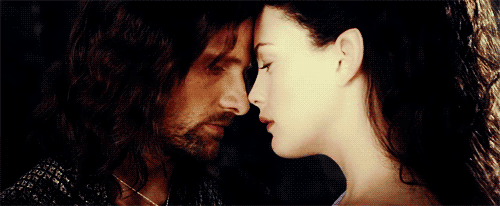
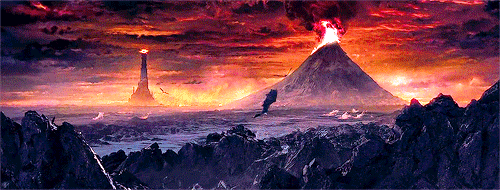
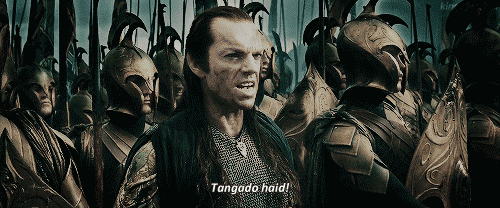


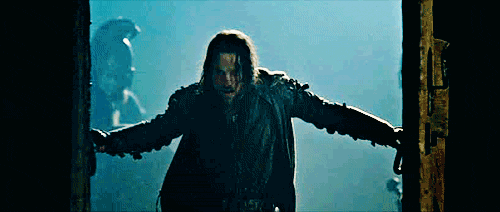
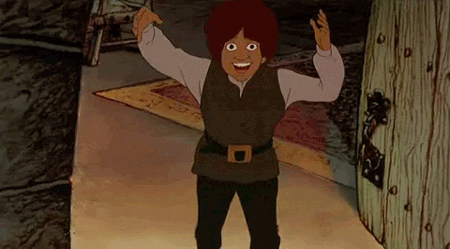
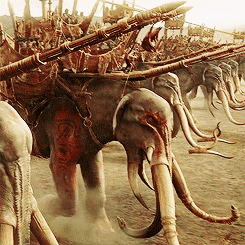






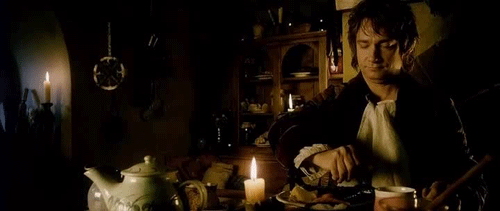
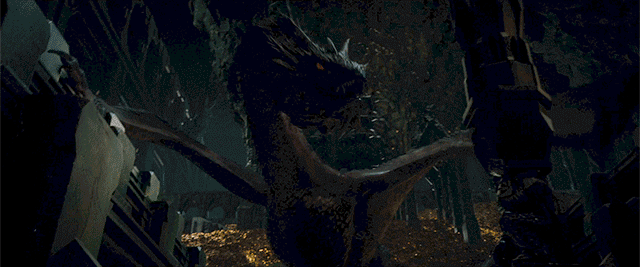

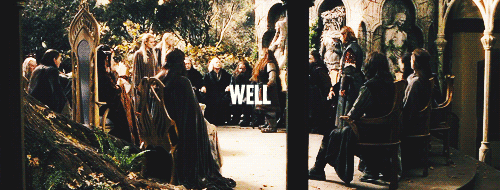
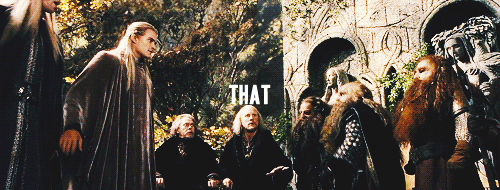
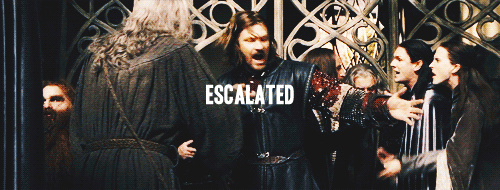
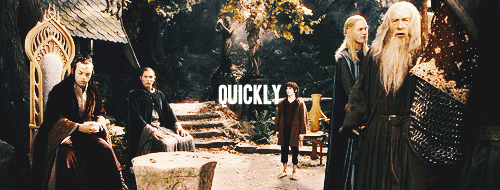
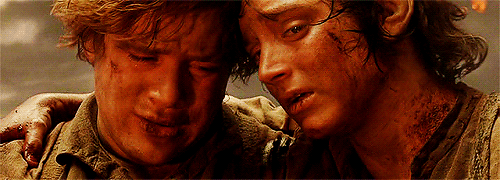
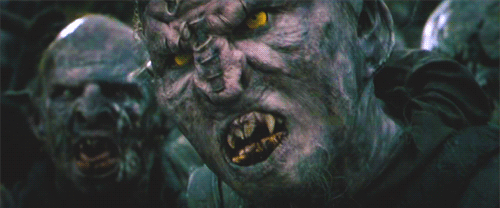
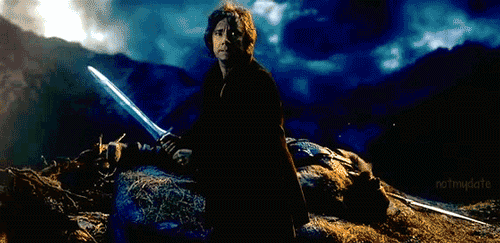

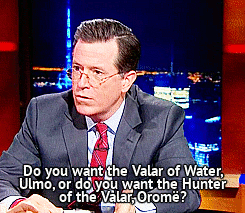

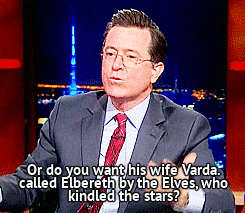


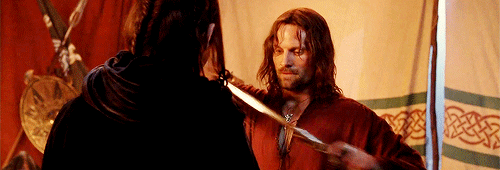



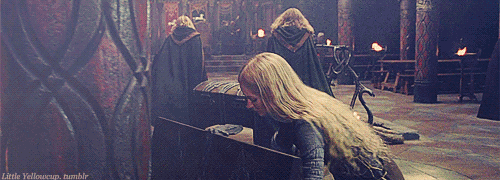
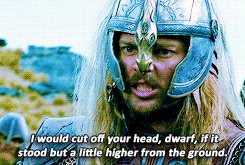

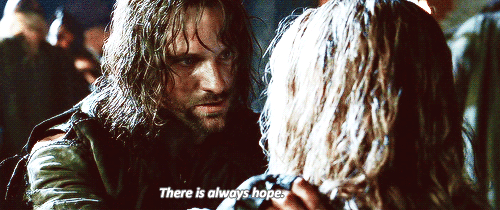


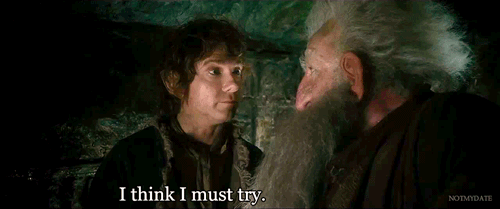
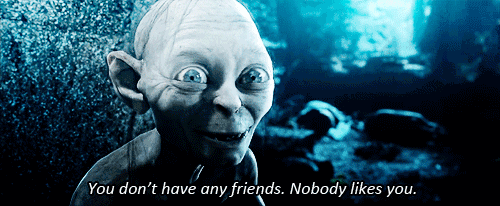


I have to say, I love the Lord of the Rings movies. The books are definitely hard to get through sometimes, but the movies? Adorations galore spring from over here. And I recommend you do what my dad did and get the extended versions. Because they are amazing. *nods*
ReplyDelete